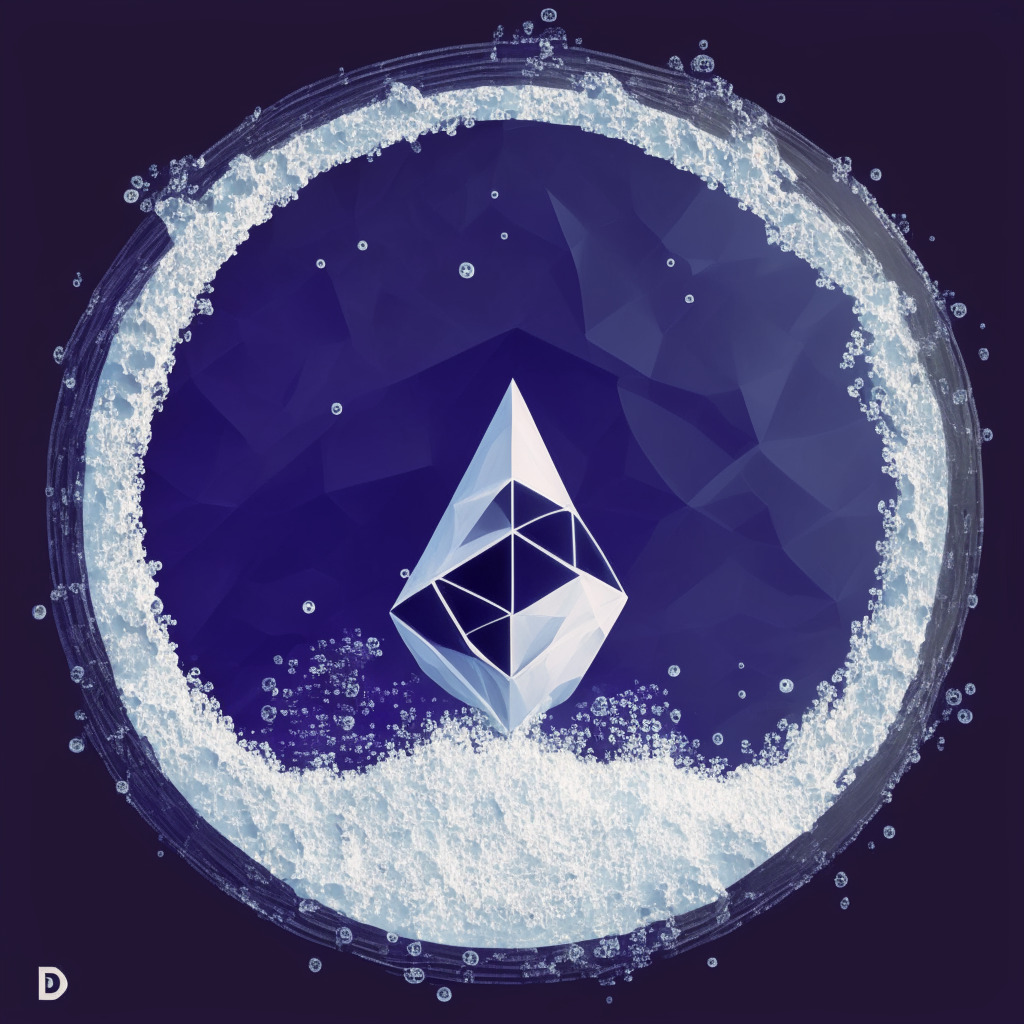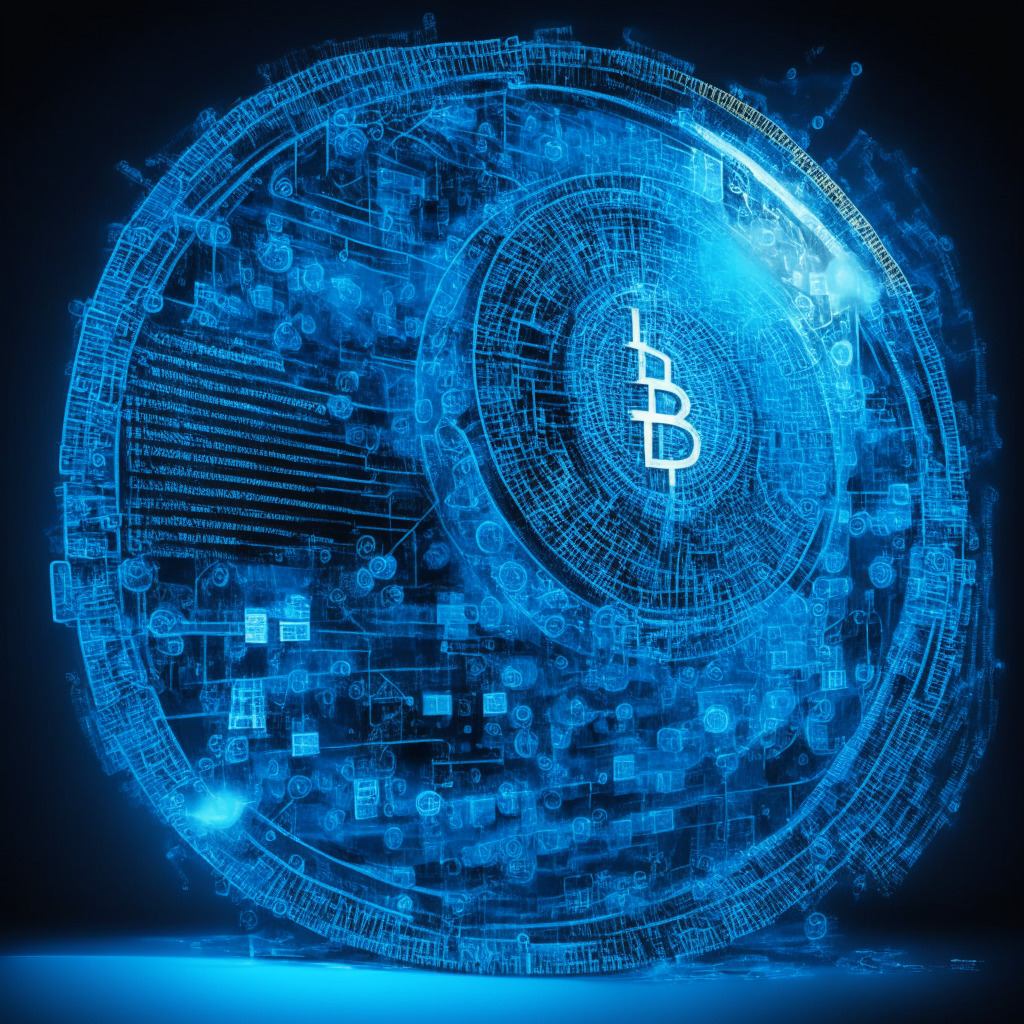“Choosing a consensus mechanism for a blockchain project is complex and multifaceted, involving the balancing of security, sustainability, scalability, regional preferences, and long-term project goals. The decision requires understanding and navigating through various project-specific details and an ever-evolving technology landscape.”
Category: Technology
Navigating the Crypto Maze: Cointelegraph’s Research Terminal -Boon or Bane?
“Cointelegraph’s Research Terminal is a new tool offering quality content about the blockchain and cryptocurrency sphere. Covering a broad range of the crypto ecosystem, this platform aims to keep users informed about industry developments. However, the risk of information overload and misinformation, alongside its exclusivity, could discourage some enthusiasts. The terminal represents a tool potentially empowering for investors but balancing data comprehensiveness and clarity is critical.”
Unraveling Circle’s Launch of Native USDC on Ethereum Layer 2: Innovation, Adoption, and Potential Risks
Circle, the blockchain and finance tech firm, has revealed its native USDC tokens on the Ethereum Layer 2 scaling protocol, Polygon. This move aims to allow smoother accessibility of USDC to users and developers. Businesses using USDC on Polygon can create decentralized applications for near-instant, low-cost transactions, revolutionizing payments, remittances and trading. However, adoption faces challenges including complex technology and security concerns.
Ethereum’s Layer 2 Networks: Breakthroughs and Cautions in the Blockchain Sphere
“Ethereum’s integration of layer 2 networks marked a shift in industry practices, with auxilliary networks supporting developers and easing mainnet congestion. Base and Friend.tech, for instance, have seen significant growth. However, Messari’s analysts advise caution due to market uncertainties.”
Navigating Murky Waters: The Saudi-Chinese AI- Blockchain Venture and Binance’s IRI Commitment Review
Saudi Arabia and China are collaborating to create AceGPT, an Arabic-based AI system designed for Arabic queries. Despite its potential, concerns arise over misuse of sensitive information and neglect of safety checks. Meanwhile, the blockchain Industry Recovery Initiative receives criticism for lack of funding transparency amid falling crypto venture funding.
Zimbabwe’s Gold-Backed Digital Tokens: A Game Changer or Double-edged Sword?
Zimbabwe’s central bank has introduced a gold-backed digital token, Zimbabwe Gold (ZiG), as a payment method. Physical gold tokens were introduced last year to entice local investors to invest in national assets. The digitization aims to expand value-preserving instruments and facilitate investment versatility. The strategy’s success, amid socio-economic complexities and inflation, remains uncertain.
Pioneering a New Frontier: China Daily’s Venture into the Metaverse and NFTs
“China Daily, an English-language newspaper giant, has announced a $390,000 budget for creating a metaverse and non-fungible tokens (NFT) platform. This groundbreaking initiative, soliciting offers from both domestic and international blockchain firms, highlights the escalating global interest in NFTs and the metaverse, potentially morphing the future of journalism and content creation.”
Rise of the Digital Yuan: China’s Lead in Central Bank Digital Currencies and Global Impact
“China’s digital yuan experienced increased usage at the Hangzhou Asian Games, where athletes interacted with the new technology. New language features were introduced, and the currency is linked with Hong Kong’s Fast Payment System. Overseas visitors can now open a digital yuan wallet using an overseas mobile phone number, and can ‘top up first, and use later’, for smoother transactions.”
Smart Contracts on Bitcoin: The Future of Blockchain or an Overreaching Gamble?
The recent “BitVM: Compute Anything on Bitcoin” white paper by ZeroSync’s project lead, Robin Linus, proposes a new way to implement complex off-chain smart contracts on Bitcoin. Based on a Turing Complete system, this method would broaden Bitcoin’s operations to include applications like tactical games verification, bridging BTC to foreign chains, and constructing prediction markets.
China Daily Ventures into NFT: An Ambitious Leap or A Trepid Path?
“China Daily, a CCP-owned newspaper, intends to launch an NFT platform in collaboration with a third-party blockchain firm. With a fund amounting to 2.813 million yuan, the aim is to foster Chinese civilizational influence through tech including Blockchain, AR/VR, NFTs, cloud computing and big data.”
MoonPay’s Cryptocurrency Swapping: A Simplified Approach with Potential Risks and Future Promise
“MoonPay has launched a feature for users to swap one cryptocurrency for another, elevating their consumer-focused application. Despite facing allegations of artificially inflating NFTs, major firms are expanding their crypto portfolios mirroring MoonPay’s approach. Adapting regulatory framework, business strategy, and observing ethical issues are key to this emerging tech’s growth.”
Exploring Digital Frontiers: CryptoPunks’ Physical Manifestation and the Advent of e-HKD and Swaps
Avant Arte marketplace and Yuga Labs collaborate to release two limited edition prints bringing 10,000 CryptoPunks into the physical world. Elsewhere, Pfizer-backed decentralized organization VitaDAO, launches biotech company Matrix Bio. Hong Kong explores potential digital currency, e-HKD, while crypto infrastructure MoonPay introduces a new feature called Swaps.
Navigating the Waters of Real-World Asset Tokenization: Insights from Backed’s Latest Launch
“Swiss entity Backed has launched its latest product, bIB01, on the Base blockchain, offering a digital engagement tool for traditional finance enthusiasts. Backed’s tokenized securities, or bTokens, represent real-world assets like corporate bond ETFs and treasury ETFs. Despite limitations for US-based investors, this marks an intriguing merger of traditional assets with digital technology.”
Navigating New Waters: First European Film Funded by NFTs Stirs the Cinematic World
‘The Quiet Maid’, the first European feature film funded through NFT sales, represents a new era of blockchain technology in the creative industry. Despite uncertainties surrounding NFTs, this film’s funding model garners worldwide attention. The evolution of blockchain in filmmaking is yet to unfold.
Unraveling the Bitcoin Minetrix: Revolutionary Opportunity or Overhyped Concept?
“Bitcoin Minetrix, the pioneering tokenized Bitcoin cloud mining operation, offers an innovative approach to the crypto community, boasting a presale of over $500,000 and 1224% Staking APY. It introduces non-transferable mining credits to reduce theft risks and works to democratize crypto experience, especially for retail investors.”
Decoding The Future: Blockchain, Bitcoin, and the Fear of Centralized Digital Currencies
“Blockchain technology and cryptocurrencies are transforming financial infrastructures, providing a decentralised exchange method. Cryptocurrencies like Bitcoin could pave the way for a transparent, corruption-free global currency. However, concerns about government control, environmental impact, and the implications of Central Bank Digital Currencies (CBDCs) are also emerging.”
Debate on Ripple CTO’s Call for Consensus Over Authority in XRP Ledger Upgrades
Ripple’s CTO, David Schwartz emphasized the need for community consensus before adopting the automated market maker (AMM) feature on the XRP Ledger. Schwartz clarified adoption could happen within two weeks if the majority supports it during governance voting. However, he cautioned against validators pushing for these modifications independently, highlighting the need for consensus.
Achieving Finality in Blockchain: Irrevocable Transactions, Challenges and Future Prospects
“Finality in blockchain refers to the irrevocable confirmation of a transaction or block of transactions. Achieving finality has challenges like network latency and potential 51% attacks. However, improved security algorithms, consensus algorithms and advanced cryptographic techniques promise faster, more reliable confirmations, and permanence of transactions.”
Mega Dice’s Million Dollar Boom: A Blessing or a Curse for Decentralized Casino Future?
The casino Mega Dice has recently attracted attention with a player winning $1 million. This is promoting the potential of the decentralized gaming industry and rationalizing the benefits over traditional counterparts. However, some concerns arise over potential problem gambling due to the platform’s ease of play and minimal KYC protocols. Mega Dice offers assurances with strict EU Anti-Money Laundering rules and constant user assistance.
Social Media Platform X, XRP Fiasco, and the Trend Shift in Crypto-Dynamics
“Elon Musk’s platform X is under criticism for suspending an XRP-focused account, raising questions of censorship. Meanwhile, XRP’s disputed past, including a lawsuit from SEC, remains a potential influencing factor. Amidst these, the platform aims for multiservice extension while an SEC investigation into Musk occurs. These instances indicate a shift in crypto and social media dynamics.”
Elon Musk’s Mission to Transform Twitter into an ‘Everything App’, But What About Crypto?
Elon Musk tested game streaming on ‘everything app’ X, drawing 2.8 million viewers. While X aims to integrate various services, including crypto, it has no clear plan for crypto implementation. To fully embody an ‘everything app’, it must satisfy users seeking decentralized finance.
Ethereum Staking Surge: Exploring Centralization Risks and Shrinking Yields
The rising staking of ether due to Ethereum upgrades sparks concerns over centralisation and lowered staking yields, according to a JPMorgan report. Despite decentralized platforms like Lido, risks tied to centralization and rehypothecation present security issues. This trend impacts the appeal of ether investment and emphasizes the evolving crypto market.
Blockchain’s Future: How Backed Finance Tokenizing Government Bonds Challenges the Status Quo
“Backed Finance has launched the world’s first tokenized government bond on the Base network, marked as blB01. This innovative move provides investors with a way to monitor the value of the asset without direct exposure. However, due to unclear regulations, it remains inaccessible to U.S. investors.”
The Future of Gaming: Exploring Blockchain’s Role in Web3 Gaming’s Meteoric Rise and Challenges
“Web3 gaming, a blend of video gaming and blockchain technology, is revolutionizing the gaming scene with aspects like decentralization, true ownership, and community. Innovations such as play-to-earn, NFTs offer a respite from Web2 monopoly. However, the fast-paced progress of Web3 gaming requires keeping up with promising projects in the blockchain-oriented gaming ecosystem.”
Blending Art and Blockchain: Dubai’s 37xDubai Explores NFTs and Web3 Future
“Dubai-based art gallery, 37xDubai, aims to educate artists and enthusiasts about Nonfungible Tokens (NFTs) and the Web3 ecosystem. The gallery is blending art and technology, viewing NFTs as a method to foster inclusivity within the art community. However, the unpredictable market conditions add complexity to this innovation.”
Zero-Knowledge Tech Fueled W-Pay: A Revolution in Secure Crypto Transactions
“Wirex, a global digital payment platform, introduces W-Pay, an App Chain powered by Zero-Knowledge technology. Aimed at enhancing connections between DApps, non-custodial wallets, and traditional payment systems, it offers swift, secure transactions and total fund control. The Ethereum Virtual Machine compatibility ensures diverse functionalities and promotes crypto ecosystem interoperability.”
PayPal’s PYUSD Stablecoin: Welcomed Asset or Threat to Tether’s Predominance?
Tether co-founder, William Quigley, in a recent interview expressed skepticism towards the acceptance of PayPal’s impending stablecoin. Highlighting that cryptocurrencies earn credibility over time, he outlined that new entrant, PayPal, would face challenges in gaining trust and performance reputation among crypto users. He flagged significant regulatory challenges and the high cost of compliance as potential hurdles for PayPal’s stablecoin.
OpenAI’s Crossroad: In-House Chip Production versus Outsourcing amidst Global Shortage
Amid a global chip shortage, artificial intelligence firm OpenAI debates on whether to bring chip production in-house or continue working with chip suppliers like NVIDIA. This decision could present unprecedented challenges, but may also provide a pathway for managing technological advancements and supply scarcity in the broader tech industry.
Harnessing Digital Yuan and Hong Kong’s FPS: A Leap Towards International Financial Synchronization or Concern for Economic Autonomy?
The digital currency research division of People’s Bank of China (PBoC) has interlinked its CBDC platform with Hong Kong’s Fast Payment System (FPS), to expedite cross-border digital yuan transactions and enhance system compatibility with international payment networks. However, this convergence of global currency networks may risk homogenizing diverse economic systems.
Unveiling the Stealthy Wave of AI in Crypto Trading: In the Footsteps of Electric Vehicle Shift?
AI is set to bring significant changes to the financial space, much like the electric vehicle trend did to the automotive industry. AI Crypto projects such as yPredict are spearheading this change in traditional finance setups with versatile tools for traders. The company offers a comprehensive solution with capabilities extending beyond just trading signals and price predictions. Despite the competitive market, yPredict’s innovative approach to AI crypto trading offers both opportunity and risk, making it a crucial player to watch in the evolving financial landscape.
Xion Unveils Cutting-Edge Layer-1 Blockchain Protocol with Strategic Focus on USDC as Transaction Currency
“CircleBurnt, backed by Animoca and Multicoin, introduces Xion, a novel layer-1 blockchain protocol using USDC, a fiat-backed stablecoin as its primary transaction currency. Xion is designed to simplify web3 complexities, offering tools that require less technical expertise, with the aim of stimulating interaction within the web3 ecosystem.”
Harnessing Volcanoes for Bitcoin: El Salvador’s Pioneering Lava Pool Project and its Global Implications
“El Salvador introduced the Lava Pool project, merging renewable geothermal energy with cryptocurrency mining, in a strategic blend of Volcano Energy’s infrastructure and Luxor Technology’s expertise to counter environmental concerns of digital currencies. It signifies El Salvador’s determination to integrate Bitcoin into its power infrastructure, becoming the first geothermally driven Bitcoin mining pool in the country.”































